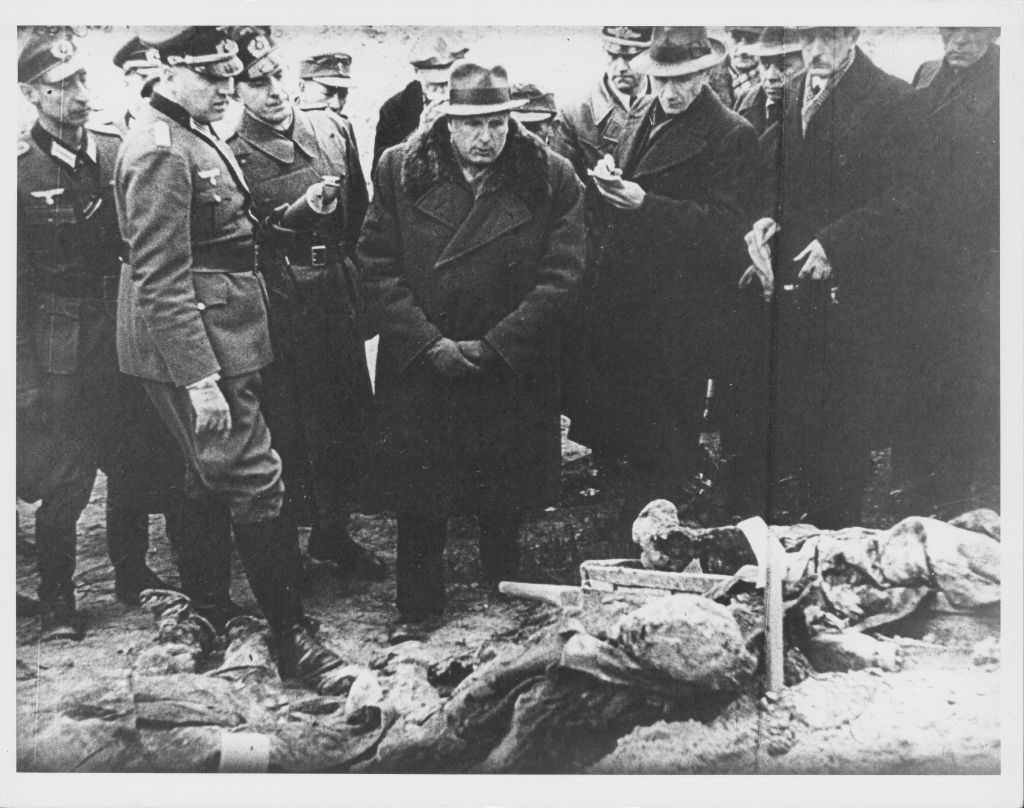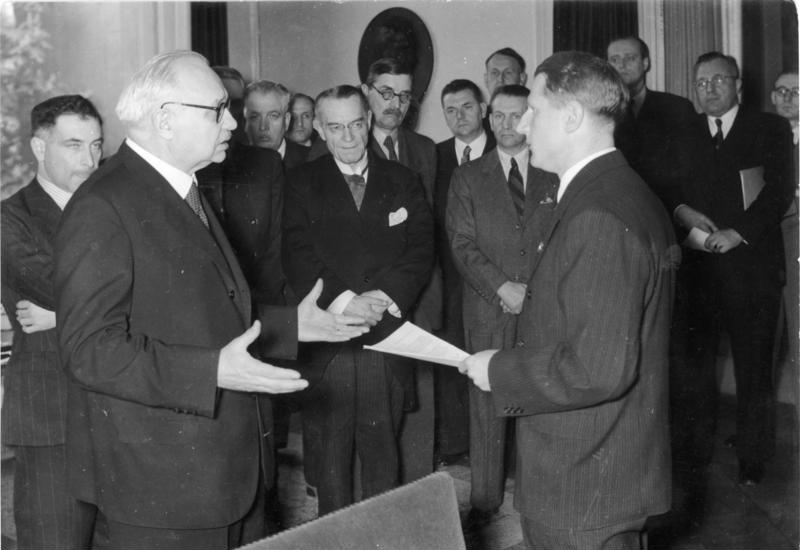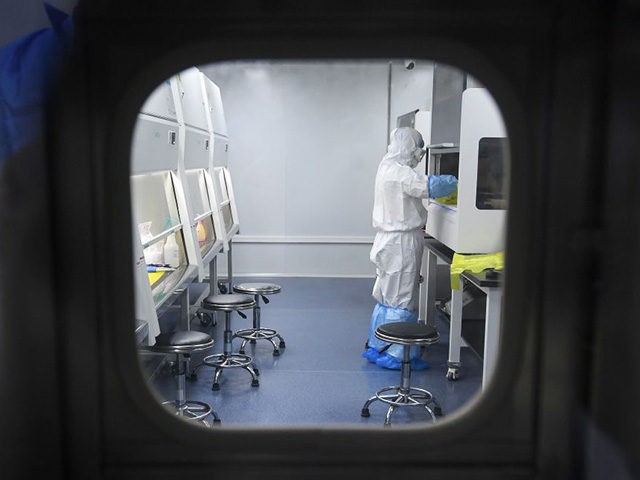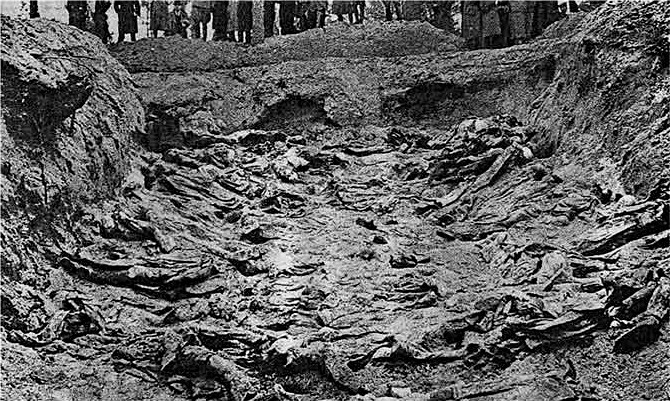The Need for a Deep Investigation
On April 14, the Washington Post headlined a scoop, “State Department cables warned of safety issues at Wuhan lab studying bat coronaviruses.” As the article explained, two State Department officials had visited the Wuhan Institute of Virology (WIV) in early 2018 and cabled back on January 19 of that year:
During interactions with scientists at the WIV laboratory, [the State Department officials] noted the new lab has a serious shortage of appropriately trained technicians and investigators needed to safely operate this high-containment laboratory.
In other words, here was clear evidence that the Chinese lab could have been the vector of the virus—perhaps accidentally, perhaps purposefully, we don’t yet have any way of knowing—that has killed more than 150,000 people worldwide. (The true number might never be known, since not every country provides an accurate or honest accounting of fatalities.)
A few hours after the Post story appeared, Sen. Josh Hawley (R-MO) retweeted it, declaring, “This is why we need an international commission to get all the facts, publish them to the world, and hold #China Communist Party accountable for its lies & suppression that have cost so many lives.”
We might note that many other senators, including Marsha Blackburn (R-TN), Tom Cotton (R-AR), Ted Cruz (R-TX), Lindsey Graham (R-SC), and Marco Rubio (R-FL), have also called for investigations of one kind or another. Similarly, two senatorial candidates this year, Bill Hagerty of Tennessee and Jeff Sessions of Alabama, have also been notably outspoken in their determination to chase down the facts about the virus.
Indeed, it’s likely that when all is said and done, there will be many official investigations going on in the U.S., covering every aspect of this crisis, foreign and domestic. Some will be fair-minded, while others will be witch hunts; the American people will have to judge which is which.
And yet perhaps the most important of these investigations will be the one that digs into the origins of the virus. Because while we can study the response to the virus—what was done badly, what was done well, what could have been done better—all we want, surely the most important goal is to keep it from happening again.
The Value of a Timeline
In the course of any thorough investigation, it’s necessary to build a timeline. That way, all the investigators, as well as outside observers, can proceed on the basis of a shared body of sequential data points—this happened, then that happened, and so on.
Already, many journalistic outlets have published timelines, but here’s the thing: Most of them are focused on the response to the virus, not the origins of the virus.
For instance, the New York Times starts its coronavirus timeline on December 31, 2019. Fox News starts its on January 4, 2020. And NPR starts its on January 5.
These timelines can be useful in terms of assessing the national and international response to the virus. But if we want to learn more about the origins of the virus, we need to push our timeline further back—much further back.
The Virus Timeline
Here’s a timeline for the virus itself:
— October 2007: A peer-reviewed medical publication, Emerging Infectious Diseases, released an article titled, “Evolutionary Relationships between Bat Coronaviruses and Their Hosts.” The piece, coauthored by 15 scientists, argued that bats are a “natural reservoir of a range of coronaviruses” and included this ominous sentence: “This finding has implications for the emergence of SARS and for the potential future emergence of SARS-CoVs or related viruses.”
SARS, of course, stands for Severe Acute Respiratory Syndrome, which emerged from Yunnan province in southern China in 2002—not far from Wuhan, China.
— December 1, 2017: A news story appeared in the magazine Nature headlined, “Bat cave solves mystery of deadly SARS virus—and suggests new outbreak could occur: Chinese scientists find all the genetic building blocks of SARS in a single population of horseshoe bats.”
Author David Cyranoski begins the piece, “After a detective hunt across China, researchers chasing the origin of the deadly SARS virus have finally found their smoking gun.” We should note that at the time, Cyranoski was not imputing any malign intent; he was simply noting that many nasty viruses seemed to be emerging from this part of China.
The Nature article detailed the efforts of two Chinese scientists, Cui Jie and Shi Zheng-Li, as they studied the nexus between the horseshoe bat and the coronavirus. The piece include this ominous paragraph:
Cui and Shi are searching for other bat populations that could have produced strains capable of infecting humans. The researchers have now isolated some 300 bat coronavirus sequences, most not yet published, with which they will continue to monitor the virus’s evolution.
We might pause over some of the words above: The researchers have now isolated some 300 bat coronavirus sequences. We can quickly see: With that many kinds of coronavirus on hand, a simple application of Murphy’s Law—that which can go wrong, will go wrong—could have devastating consequences.
So with that fearful prospect in mind, we might take note of the Nature article’s closing lines; speaking of researchers Cui and Shi, the author wrote, “They warn that a deadly outbreak could emerge again. … The risk of spillover into people and emergence of a disease similar to SARS is possible.”
— January 19, 2018: As we have seen, on that date, a State Department cable went from China to Washington, DC, stating that the WIV suffered from a “serious shortage of appropriately trained technicians and investigators needed to safely operate this high-containment laboratory.”
— January 2019: Four Chinese scientists—including Shi Zhengli, who has come to be known as “Bat Lady”—published an article in Viruses, concluding, “It is highly likely that future SARS- or MERS-like coronavirus outbreaks will originate from bats, and there is an increased probability that this will occur in China.”
— February 2020: Two Chinese scientists, Botao Xiao and Lei Xiao, published a paper suggesting that another facility, the Wuhan Center for Disease Control, could have been the source of the epidemic. As they wrote,“The killer coronavirus probably originated from a laboratory in Wuhan.”
Interestingly, this laboratory, which held some 605 bats, as well as other risky animals and materials, is just 300 yards from a Wuhan “wet market.”
— February 26: Just days after its publication, the Botao/Lei paper, pinning responsibility on the Wuhan Center for Disease Control, was withdrawn. Why? The reason has yet to be fully explained.
— April 7: Joshua Philipp, an investigative journalist associated with the Epoch Times, a publication hostile to the People’s Republic of China, released a video on YouTube, “Tracking Down the Origin of the Wuhan Coronavirus.” In less than two weeks, the video, which puts the blame on these Chinese government labs, has garnered more than 1.5 million views.
— April 13: International relations scholar Walter Russell Mead published an op-ed in the Wall Street Journal headlined, “China Still Misleads the World on the Coronavirus: A truthful account of the virus’s progress there would help us know what to expect.”
Signaling his doubt about China, Mead pointed to a study by the American Enterprise Institute that suggested that the People’s Republic has been covering up its population’s exposure to Covid-19. That is, instead of the 82,000 cases that it has reported, the real number was likely 2.9 million. (As Breitbart News has since reported, China has since revised its Covid numbers upward, although not to 2.9 million.)
— April 14: Asked about the possibility that the coronavirus could have been weaponized by China, Gen. Mark Milley, chairman of the Joint Chiefs of Staff, told reporters:
It should be no surprise that we’ve taken a keen interest in that, and we’ve had a lot of intelligence [agencies] take a hard look at that. And I would just say at this point it’s inconclusive, although the weight of evidence seems to indicate natural. But we don’t know for certain.
We can observe that Milley is a military man, and yet he speaks with the ambiguity—perhaps the precise ambiguity—of a diplomat.
— April 16: Secretary of State Mike Pompeo told Fox News:
We know that this virus originated in Wuhan, China. We know that there is the Wuhan Institute of Virology just a handful of miles away from where the wet market was. There’s still lots to learn. … We really need the Chinese government to open up. The Chinese government needs to come clean. … They say they want to cooperate. One of the best ways they could find to cooperate would be to let the world in, to let the world’s scientists know exactly how this came to be, exactly how this virus began to spread.
— April 16: Fox News headlined an ominous new scoop: “Sources believe coronavirus outbreak originated in Wuhan lab as part of China’s efforts to compete with US.” The article continued:
There is increasing confidence that the COVID-19 outbreak likely originated in a Wuhan laboratory, though not as a bioweapon but as part of China’s attempt to demonstrate that its efforts to identify and combat viruses are equal to or greater than the capabilities of the United States, multiple sources who have been briefed on the details of early actions by China’s government and seen relevant materials tell Fox News.
In other words, the Fox piece was saying, the People’s Republic of China was not seeking to use the coronavirus as an actual weapon; instead, it simply wanted to show off what it could do with viruses. To some, that’s a distinction without a difference.
— April 16: Asked at a White House press conference about the possibility that the virus somehow emerged from a Chinese lab, President Trump answered, “More and more we’re hearing the story … we are doing a very thorough examination of this horrible situation.”
— April 17: Zhao Lijian, a spokesman for the Chinese foreign ministry, pushed back on Trump and other inquisitive Americans, saying that suggestions of Chinese responsibility were intended “simply to confuse the public, divert attention and shirk responsibility.” Zhao added: “We have said many times that tracing of the virus’s origin is a serious scientific issue and requires scientific and professional assessment.” (We might note that back on March 12, Zhao tweeted, outrageously, that the U.S. Army might be the source of the coronavirus.)
— April 17: At the White House, Trump was asked again about the horseshoe bat-coronavirus connection, and answered, “It seems to make sense, they talk about a certain kind of bat, but that bat wasn’t in that area.” Trump’s implication was clear: The bat, or its virus, was brought to Wuhan. By whom? And why? To do what? Inquiring minds should want to know.
— April 19: At the White House, Trump was asked again about China’s possible responsibility, and answered, “Well, if they were knowingly responsible, certainly. If they did—if it was a mistake, a mistake is a mistake. But if it were knowingly responsible, yeah, then there should be consequences.”
— April 20: Sen. Tom Cotton tells Fox News, “The most plausible explanation for the origins of these viruses is one of those two labs in Wuhan.”
— April 21: White House trade and production adviser Peter Navarro tells Fox News’s Sean Hannity that China “spawned the virus, probably in that P4 lab right there in China, and then they hid the virus behind the shield of the World Health Organization. And Sean, what that did over a six-week period is allow hundreds of thousands of Wuhanians, basically, to get on aircraft and seed the world.”
— April 22: Headline in Breitbart News: “China Lashes Out at Australia for Proposing International Probe into Coronavirus Origins.” One is reminded of the old saying from World War Two: The flak is always heaviest when you’re getting near the target.
— April 23: Pompeo said at a press conference that China had “destroyed” samples of the coronavirus and “covered up” the bad news about the virus, thereby hindering the chance for the U.S., and the rest of the world, to prepare for its onslaught.
— April 24: Per the BBC, China rejects the call of Australian prime minister Scott Morrison (among others), for an international investigation, claiming such an effort would be “politically motivated.”
— April 25: Navarro tells Fox News’s Neil Cavuto, ” This is a war. It’s a war that China started by spawning the virus, by hiding the virus.”
International Investigation? National Investigation? The Katyn Precedent
We might return to Sen. Hawley’s suggestion of an international investigation of China. We certainly should hope that that all the countries of the world should wish to get to the bottom of the question of the coronavirus’s origins. After all, the vast majority of coronavirus-caused illnesses and deaths have occurred outside the U.S. This is, for sure, a planetary crisis.
Some might be concerned, of course, that an international investigation would be inevitably tangled up in the United Nations, which has so often shown an anti-American bias. Indeed, some U.N. agencies, such as the World Health Organization, have proven themselves, as Breitbart News has documented, to be in the pocket of China.
Still, history tells us that there’s value to an international inquiry—at least as a starting point.
For instance, way back in April 1943, the Nazi Germans discovered that the Soviet Union had massacred some 22,000 Polish military officers and intellectuals three years earlier, at a place in Russia called Katyn. (It’s not well remembered that in 1939, Joseph Stalin’s Reds had joined with Hitler’s Nazis in attacking Poland; both aggressors seized hundreds of thousands of Polish captives—many of whom met a bad end.)
The Germans had overrun Katyn back in 1941, but it was only two years later that they discovered the Polish corpses mouldering in mass graves. The Nazis were plenty guilty, of course, of their own heinous crimes against humanity, and yet they hadn’t committed this crime. So Hitler’s propagandists jumped on the opportunity to highlight this mass murder and cast the blame on their enemy, the Soviet Union.

Members of the foreign press and the Katyn Commission watching officials exhume the bodies of the Polish soldiers killed at the Katyn massacre during World War Two, Russia, 1943. (Gabriel Hackett/Archive Photos/Getty Images)

The Third Reich Health Leader Leonardo Conti (right) holds the Report of the International Katyn Commission, May 4, 1943, in front of Dr. Ferenc Orsós from the University of Budapest. (German Federal Archives)
Germany managed to bring in independent observers from 12 countries, including the International Red Cross, to inspect the Katyn site; the bodies were easily identifiable through their uniforms and other personal effects. So the outside observers concluded that yes, this was a Soviet crime.
For their part, the Soviets denied any involvement, blaming the Germans, and yet the proof was obvious to anyone but a communist. Later in 1943, the Red Army recaptured Katyn from the Wehrmacht, and the Russians quickly destroyed the remaining evidence. Indeed, the Russians set up their own big-lie propaganda commission, which dutifully pinned culpability for Katyn on the Germans.
Yet Nazi crimes notwithstanding, the reality that the Soviets had committed this particular crime echoed around the world. In particular, Poles, and Polish-Americans, as well as friends of Poland everywhere, shuddered at the thought that the Soviets were coming to Poland not as liberators, but as conquerors—even mass-murderers.
Interestingly, the very next year, 1944, the Red Cross, having participated in the Katyn fact-finding, among many other activities during those terrible war years, was honored to receive the Nobel Peace Prize.
In fact, all through the 1940s, various international groups pursued the Katyn issue, interviewing witnesses and gathering data where they could. The result of all these international efforts was the building of convincing, and enduring, proof that it was, for sure, the Soviets who were guilty of the Katyn Massacre.
In the meantime, back in the U.S., outrage was growing over Soviet domination of Poland; if the Soviets could lie so brazenly about Katyn, then they could lie about everything else. Indeed, particularly among ethnic communities that could trace their ancestry back to Central and Eastern Europe, the realization that the old countries–now dubbed captive nations—were being held in bondage by the Red Army and their Communist Party overlords contributed greatly to anti-Soviet pro-Cold War sentiment.
So we can see: Those early investigations of Katyn paid big dividends in terms of making the truth known. Yes, the truth was grim, but better to know it than not know it.
Then, in 1951, the U.S. House of Representatives formed a fact-finding body of its own, the Select Committee to Conduct an Investigation of the Facts, Evidence, and Circumstances of the Katyn Forest Massacre—better known as the Madden Committee, after its chairman, Ray Madden (D-IN). The following year, 1952, the committee concluded, “No one could entertain any doubt of Russian guilt for the Katyn massacre.”
Needless to say, the Soviets continued to deny everything. Still, the diligent work of international and national fact-finders proved that the Polish blood was on Russian hands.
Finally, in 2010, long after the U.S.S.R. had collapsed, the Russian government belatedly conceded that the Soviets were guilty. (In 2011, Poland made a dramatic and compelling movie about Katyn.)
So we can see: There is great value in building an international consensus on the basic facts of a case. There’s never a guarantee that an international inquiry will succeed, but if it does, it’s a success worth having.
So now, back to China and the coronavirus. We don’t know what happened with the virus. We can have our suspicions—even our strong suspicions—but until we fully investigate, we won’t know for sure.
So Sen. Hawley is right to call for an international investigation. If an honest international commission—perhaps including the Red Cross—could be formed and allowed to do its work, the findings would be enormously valuable, not only for the sake of finding out the truth, but also for the sake of making sure that this sort of debacle is never repeated.
Of course, it’s always possible that the Chinese might find a way to block an international commission from finding the truth about the coronavirus, using the same big-lie tactics that the Russians used about the Katyn Massacre.
If so, then America will have to rely on itself to find the truth about the origins of the virus. We can do that, of course, if we choose to—whether or not the rest of the world wants to be a part of it.
Because the truth about the coronavirus, whatever it proves to be, is too important not to be known.
We can’t let this happen again.


COMMENTS
Please let us know if you're having issues with commenting.